This post is all about How To Organise Open Shelves In Kitchen.
There’s something undeniably appealing about open kitchen shelves. They make a space feel lighter, more accessible, and even a bit more personal. But when left unchecked, they can quickly slip into looking cluttered or chaotic rather than clean and stylish. The key is finding that balance between beauty and practicality, and that’s exactly what we’ll focus on here.
If you’ve been wondering how to organise open shelves in kitchen spaces so they feel both functional and curated, you’re in the right place. With a few thoughtful strategies, you can turn open shelving into one of the highlights of your kitchen rather than a source of frustration.
Start with a Declutter and Edit Your Items
Before you dive into styling, the first and most important step is to pare things back. Even the most carefully placed accents won’t look intentional if the shelves are overloaded. This is where editing makes all the difference.
Take everything off your shelves, then sort items into three categories: everyday essentials, occasional-use pieces, and decor. Everyday items like plates, mugs, or glasses should stay within easy reach, while purely decorative touches should feel supportive, not overwhelming. Anything that doesn’t serve a purpose, whether it’s a function or design, is best stored elsewhere.
When you approach this process, think like a curator rather than simply a homeowner putting things away. Every piece you leave on display should earn its spot, either by making your life easier or by enhancing the overall style of the room. That mindset alone can transform the way the shelves look and feel.
If you’re unsure where to draw the line, remember this: open shelving isn’t meant to hold everything you own, only the pieces that deserve the spotlight. This step is the foundation of how to organise open shelves in kitchen areas so they truly shine, not just exist.
Group by Category for Easy Access
Once you’ve narrowed down what deserves space on your shelves, the next step is grouping. This is where organisation meets design in the most practical way. By arranging items by category, you not only make your kitchen easier to use day-to-day, but you also create a sense of rhythm and order that’s visually pleasing.
Think about stacking plates neatly in one area, lining up glasses in another, and keeping mugs together in a way that feels intentional. If you’re displaying pantry staples like flour or grains, store them in matching jars or containers and cluster them together. This way, everything has a “home,” and your shelves start to feel purposeful instead of random.
From a stylistic standpoint, grouping by category creates natural breaks in the shelving. These breaks give the eye a chance to rest and prevent the shelves from looking like a never-ending row of mismatched items. It also allows you to highlight certain collections, maybe your favourite ceramics or a simple set of drinking glasses, without losing them in the mix.
When exploring how to organise open shelves in kitchen layouts, grouping gives you both form and function. The end result is a setup that feels as effortless to use as it looks polished.
Balance Style and Function
One of the main challenges with open kitchen shelving is finding the sweet spot between looking styled and being truly functional. Too much emphasis on aesthetics and you’ll end up with shelves that look polished but impractical; lean too far into utility, and they begin to feel like storage racks instead of part of your design.
The key is to treat your shelves as equal parts display space and storage. Everyday items like dishes, bowls, and glasses should always come first. Then, layer in a handful of decorative elements like a trailing plant, a ceramic vase, or even a stack of well-chosen cookbooks. These details are what make the shelves feel warm and personal rather than strictly utilitarian.
Mix Everyday Items with Decorative Touches
By weaving in decorative accents among functional pieces, you create a natural balance. For example, a small ceramic dish sitting alongside neatly stacked plates feels harmonious rather than fussy.
It’s worth mentioning that the best results usually come when you add restraint. A shelf loaded with decor and only a few functional items quickly loses its practicality. Likewise, a row of nothing but dishes ends up looking flat. The balance comes from pairing the two intentionally.
Use the Rule of Thirds for Styling
Here’s a simple design principle that translates beautifully to open shelves: the rule of thirds. Think of each shelf as being divided into three segments. Then, rather than filling every inch with objects, aim to style within those “thirds.” Maybe one segment holds a stack of bowls, another a clear jar of pasta, and the last a feature piece like a wooden cutting board leaned vertically.
This approach provides balance, prevents shelves from looking overcrowded, and makes it easier to maintain a clean, consistent look. It also gives you a framework to work with rather than leaving you unsure where to start.
When learning how to organise open shelves in kitchen spaces, style is every bit as important as practicality. Finding that balance creates shelves you’ll love both to look at and to use.
Make Use of Containers & Baskets
Even with curated items, smaller pieces can easily add visual clutter. That’s where containers, baskets, and jars become your best tools. Not only do they make shelves look more cohesive, they also give the illusion of intentional design, even if they’re simply hiding everyday odds and ends.
Transparent glass jars are perfect for storing pantry staples like rice, coffee, or sugar. Woven baskets can hold less attractive kitchen items such as linens, packaged snacks, or utensils you don’t use daily. By grouping similar items within containers, you keep everything contained in a way that feels polished.
The real benefit here is cohesion. If you look at styled kitchens, you’ll notice that repetition is what makes them visually appealing. Matching jars lined up in a row, or two similar baskets side by side, immediately reduces visual noise on open shelves.
So if you’re searching for ways on how to organise open shelves in kitchen layouts without feeling overwhelmed by bits and pieces, investing in containers is one of the simplest strategies. They’re functional, stylish, and endlessly adaptable.
Play With Height, Depth, and Texture
Even when everything is neatly grouped, open shelves can sometimes look a bit flat if everything sits at the same level. The trick is to play with height, depth, and texture in your styling. This not only gives your shelves more dimension but also makes them visually engaging.
Start by mixing items of varying heights. For example, place a tall vase or pitcher next to a horizontal stack of plates. The variation creates a rhythm that feels natural instead of repetitive. Layering helps too: lean a cutting board behind a row of bowls or place a framed print against the wall behind stacked mugs. These little touches add depth without overwhelming your shelves.
Texture is equally important. The best-styled open shelves usually bring together contrasting materials, shiny glass against matte ceramic, natural wood beside metal accents, or soft linens folded next to sleek dishware. These variations keep the shelving from looking static and help create that inviting, lived-in look.
When thinking about how to organise open shelves in kitchen spaces, remember that variety, when handled carefully, is what makes them come alive. Without it, even the neatest setup can feel uninspired.
Leave Breathing Space
Here’s one of the most overlooked aspects of shelf styling: leaving room for the shelves to breathe. It can be tempting to display everything you love, but open shelving works best when it doesn’t feel overcrowded. Negative space, those small moments of emptiness, is just as valuable as the items on display.
This doesn’t mean your shelves should look sparse or unfinished. Instead, think of spacing as part of the design. Give plates and bowls room to stand on their own without being pressed against the next stack. Keep a few inches of open surface between groupings so the eye can pause. These breaks create balance and prevent the shelves from overwhelming the space.
In practice, this principle also makes shelves easier to maintain. With fewer items crowding the space, it’s simple to clean and reorganise when needed. Plus, open shelving that feels light and airy is far more inviting than overcrowded rows of kitchenware.
When figuring out how to organise open shelves in kitchen designs, restraint is your best ally. A little space not only enhances style but also makes your shelves more functional for everyday living.
Maintain Your Shelves Regularly
Even the most beautifully styled shelves won’t stay that way without a little upkeep. Kitchens are busy spaces with shelves that collect dust, cooking oils, and the occasional misplaced item. The good news is, keeping them looking fresh doesn’t have to be time-consuming.
Get into the habit of giving your shelves a quick reset once a week. Wipe down surfaces, rearrange anything that’s drifted out of place, and do a quick check for items that don’t belong. If you’ve styled your shelves thoughtfully from the start, this step should take only a few minutes.
Another tip: rotate decorative accents seasonally. Swapping a plant, vase, or a stack of cookbooks is an easy way to refresh the look without starting from scratch. This not only keeps things interesting but also makes sure your shelves evolve naturally with the rest of your home.
Consistent upkeep ensures that how you organise open shelves in kitchen areas isn’t just about achieving the look once, but actually sustaining it. The payoff is shelves that stay both visually appealing and useful every day.
Open kitchen shelves can be one of the most exciting design elements in your home, but only if they’re organised with intention. By starting with a thorough declutter, grouping items smartly, balancing style with function, using containers to tame the clutter, playing with height and texture, leaving breathing room, and maintaining your setup regularly, you set your shelves up to be both beautiful and practical.

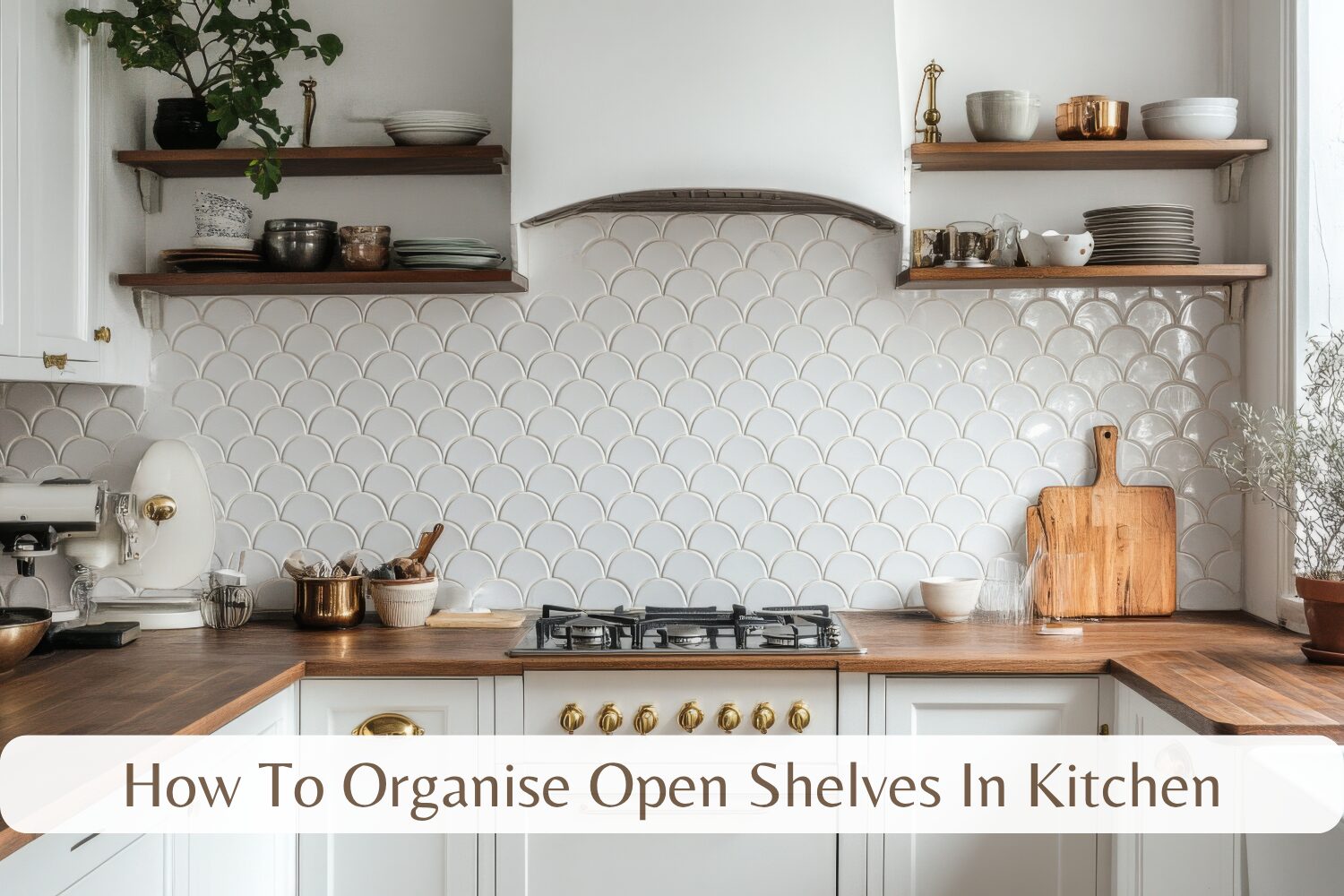
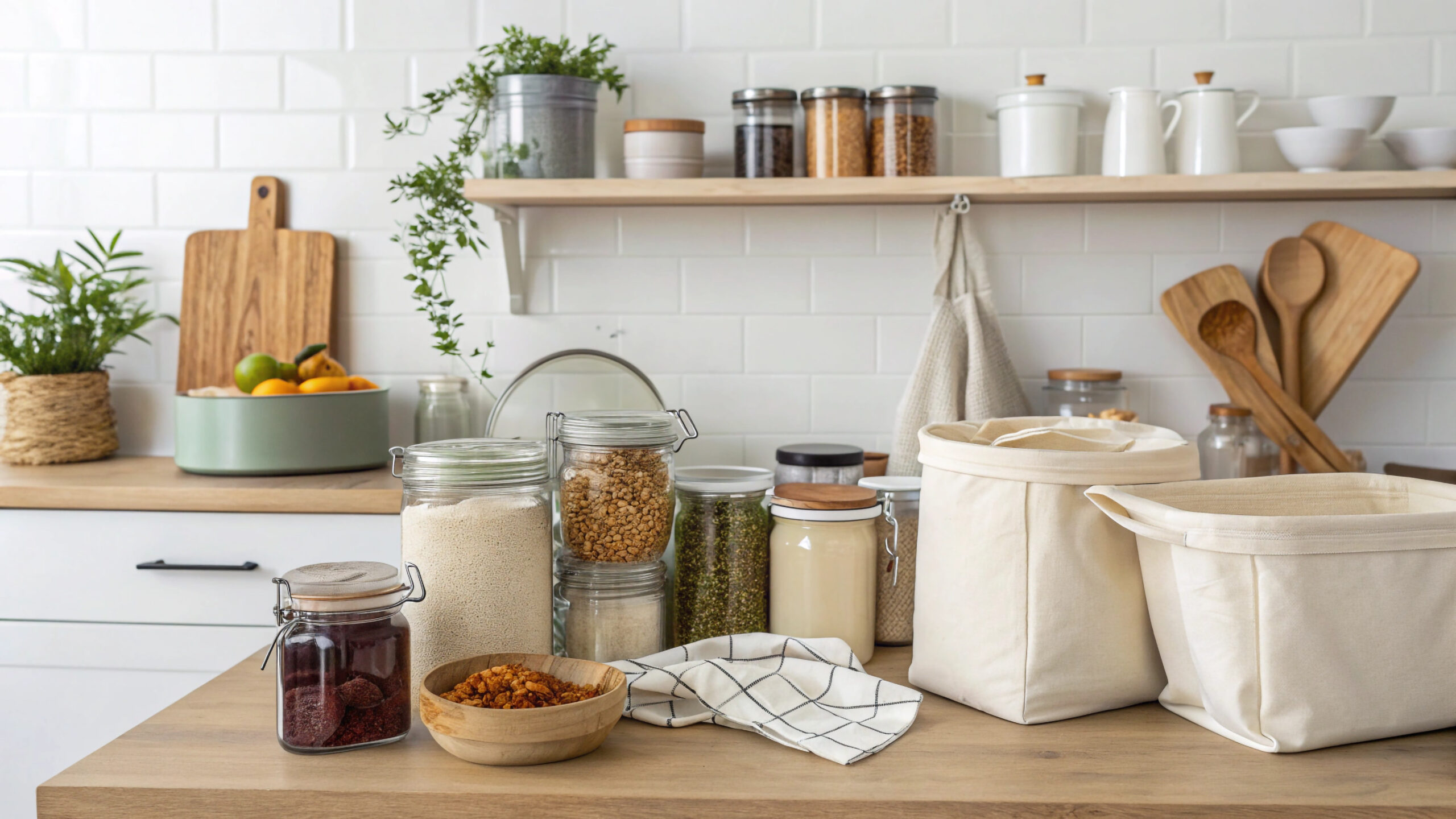
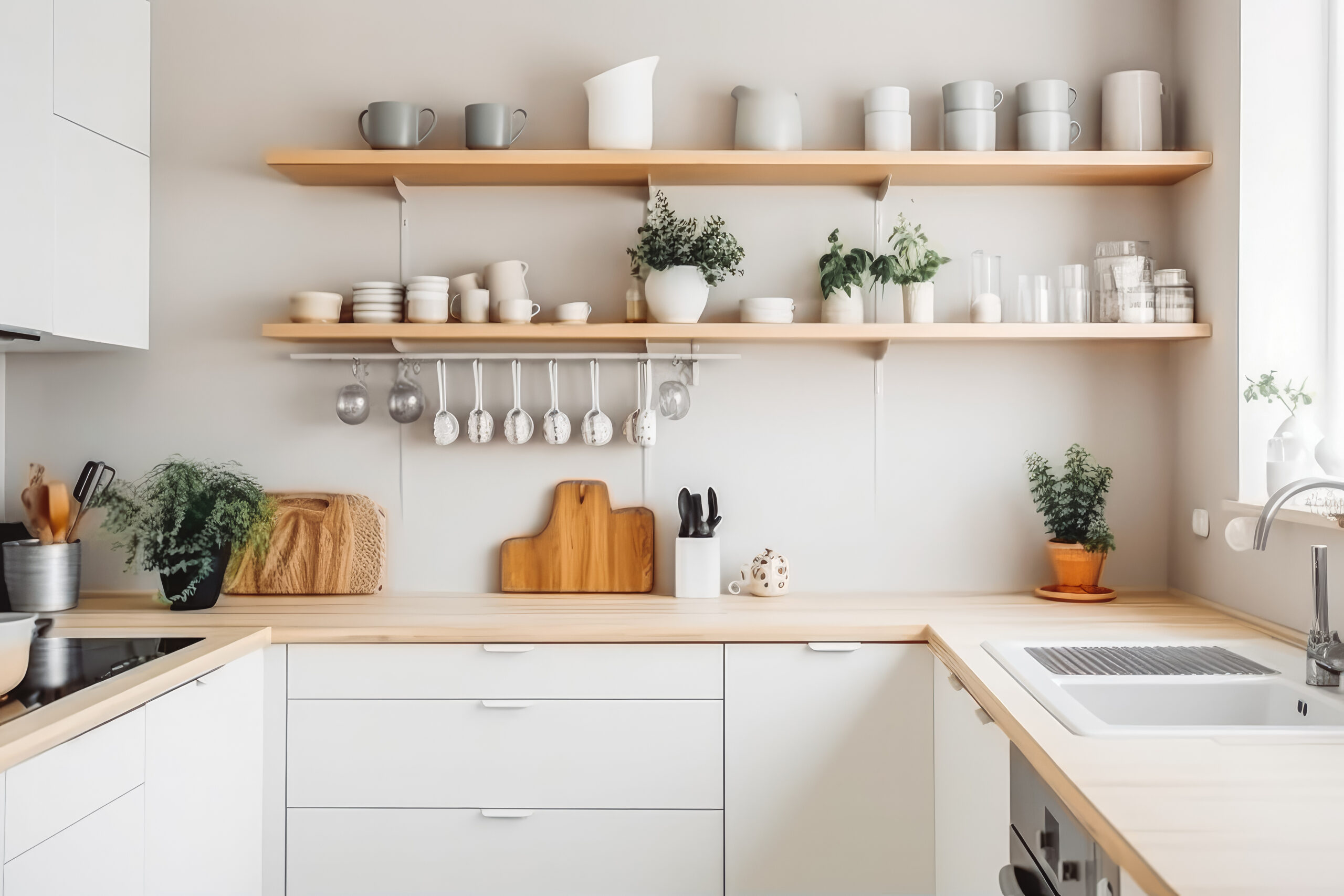
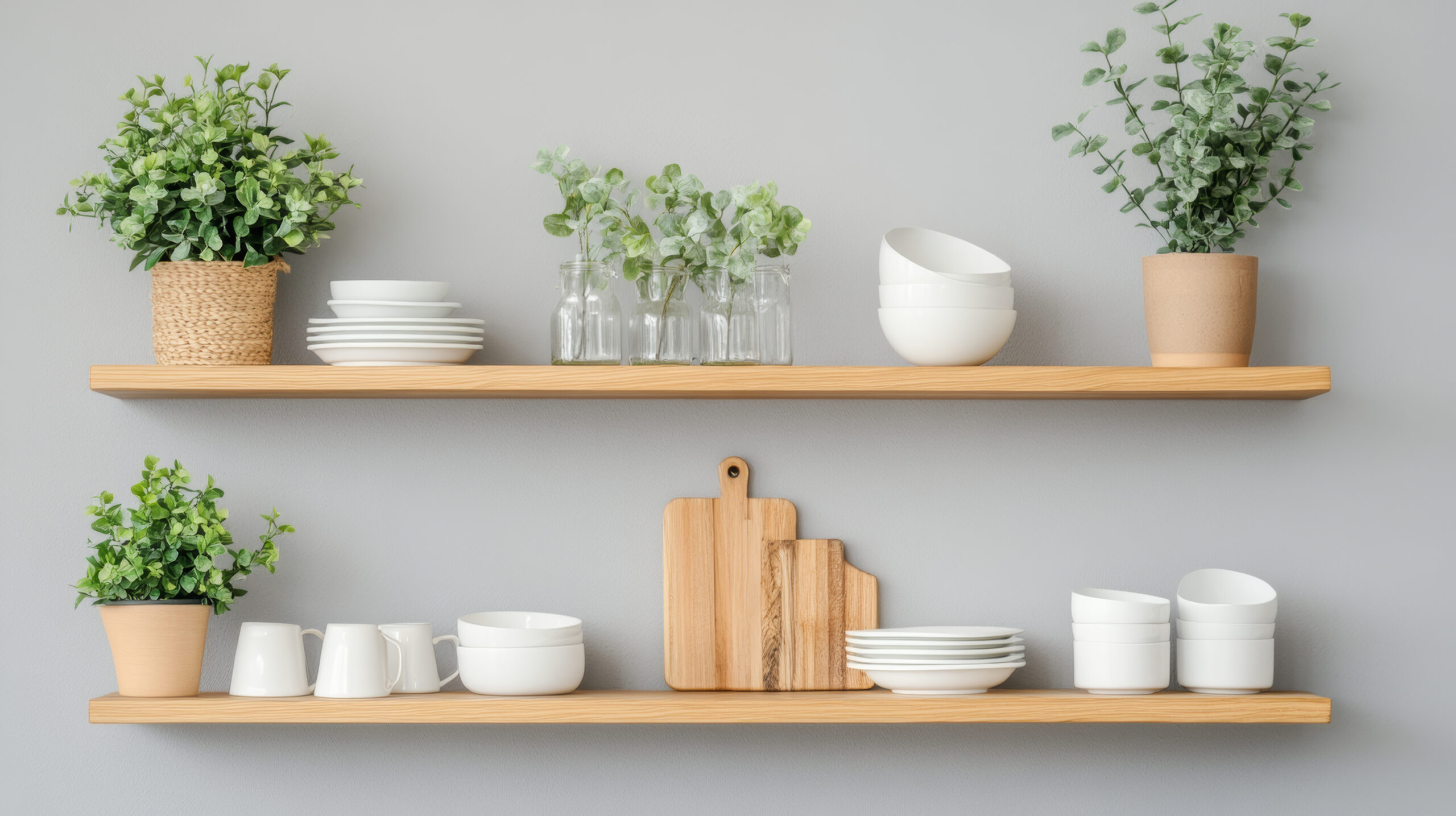
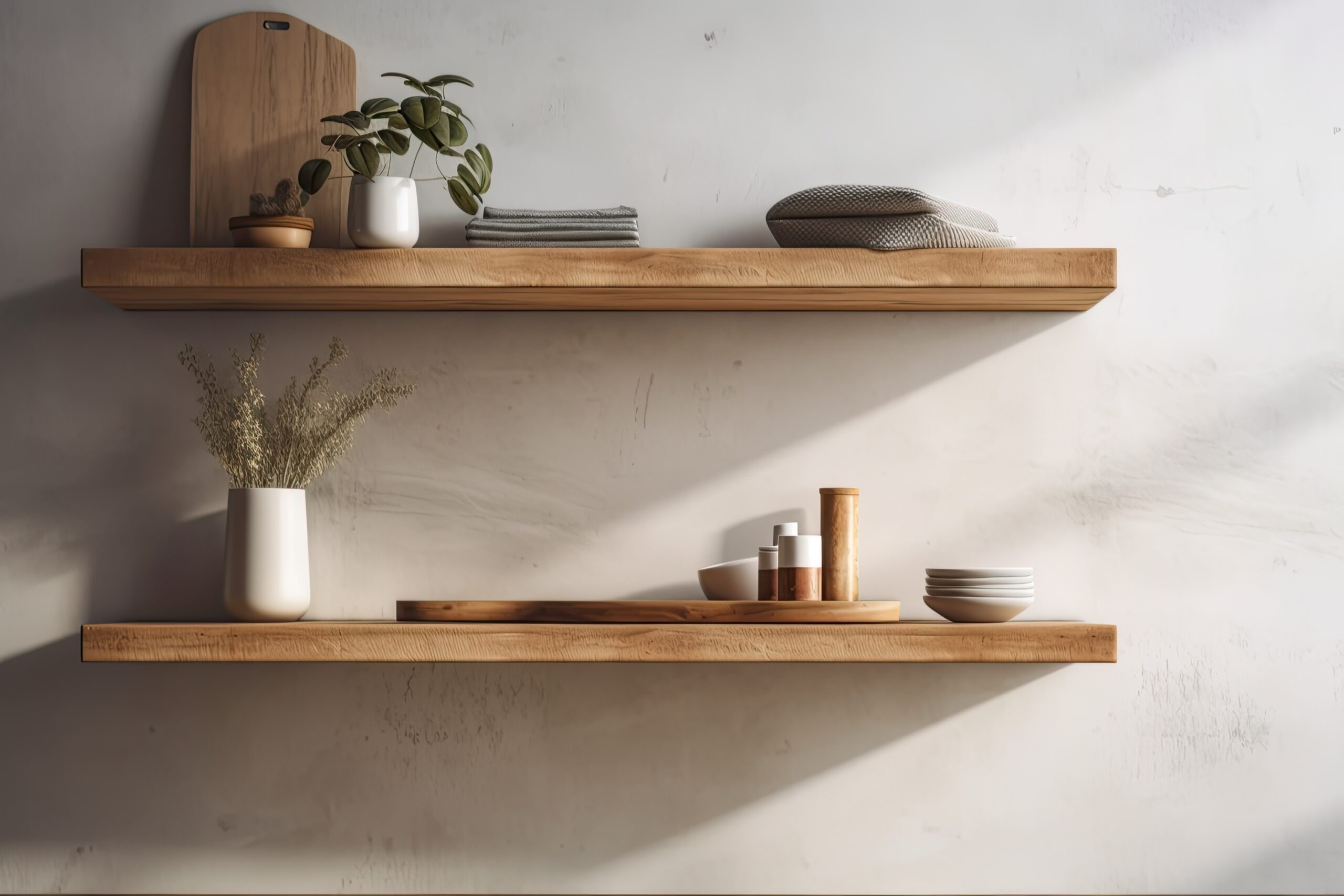
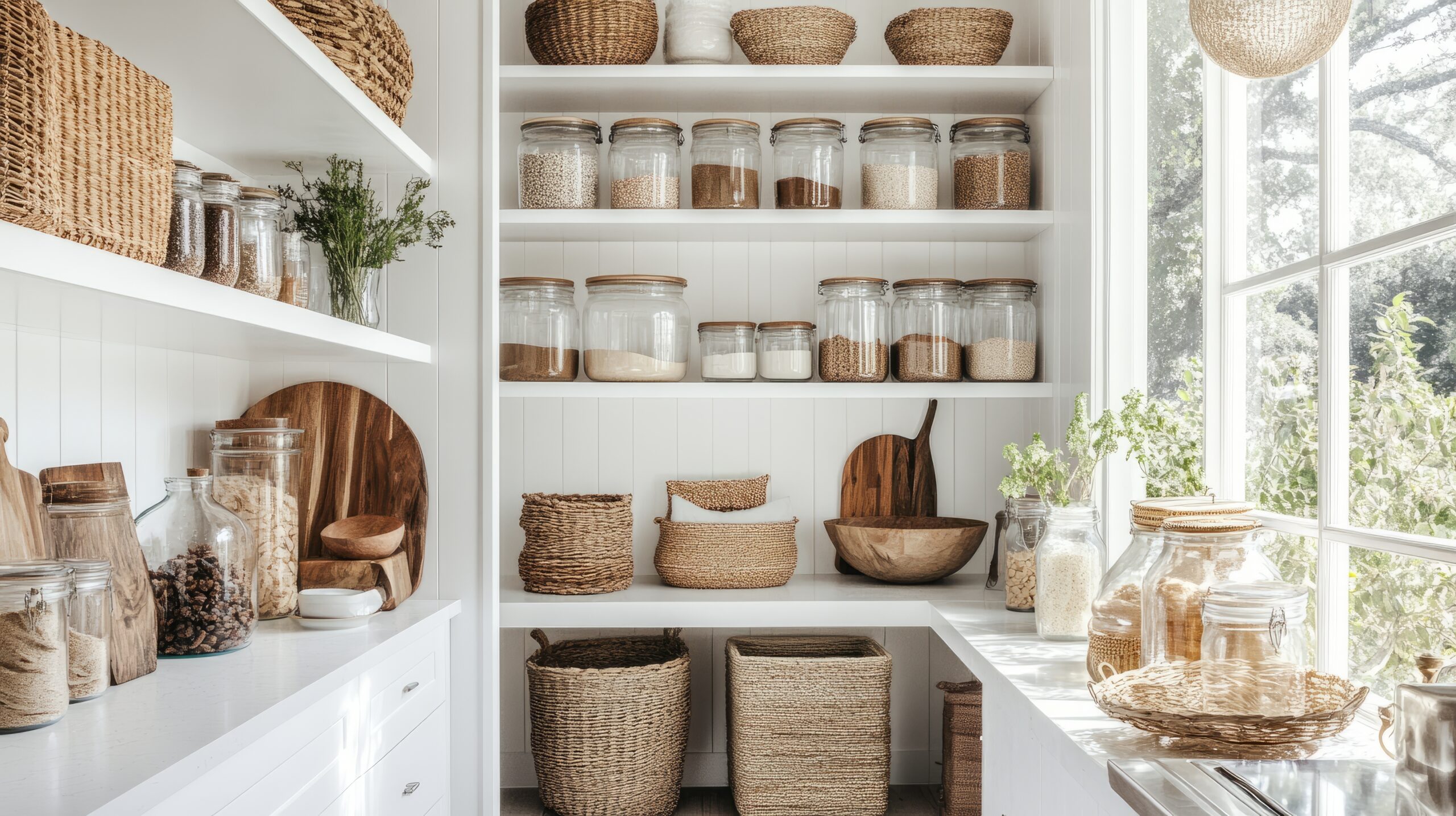
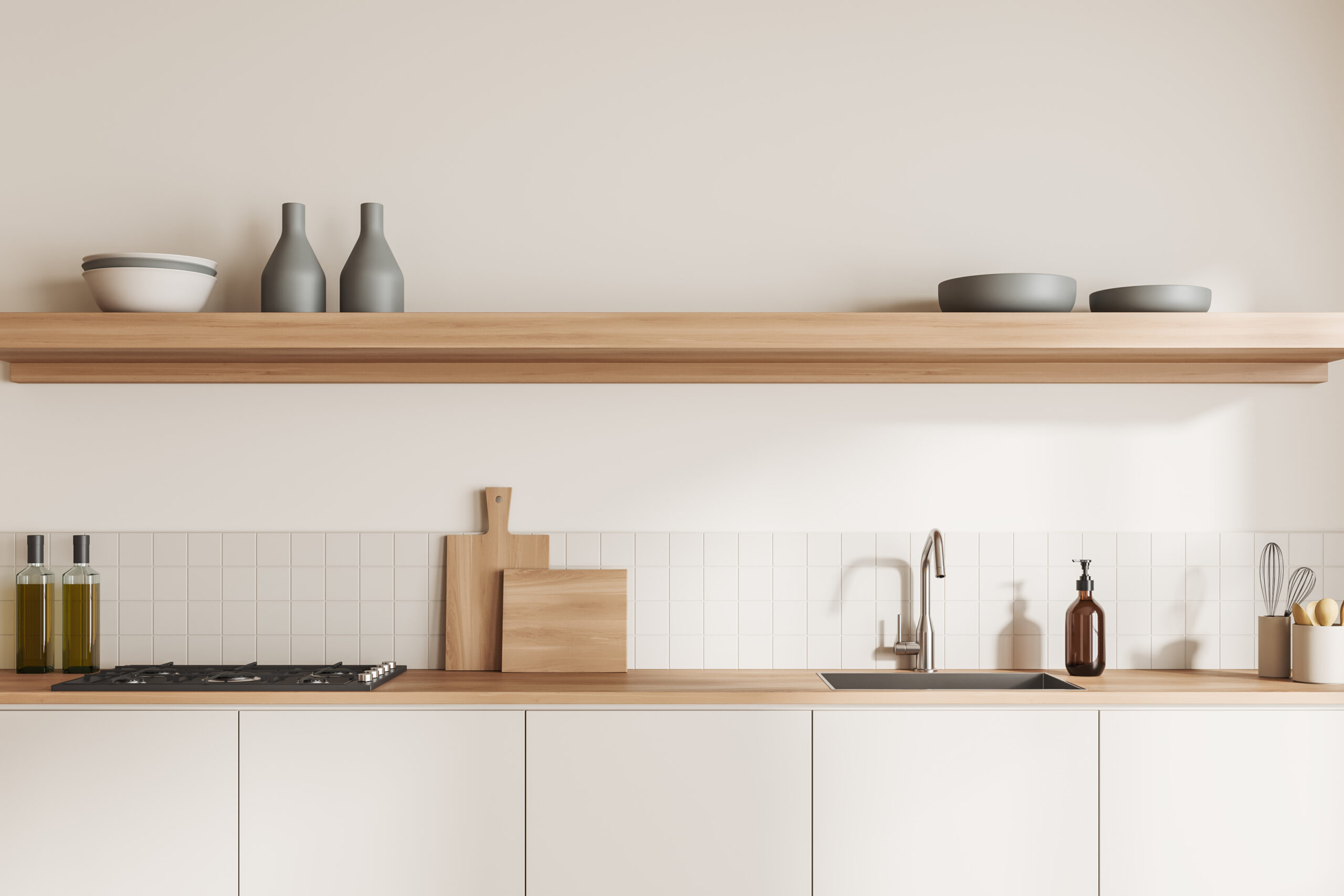
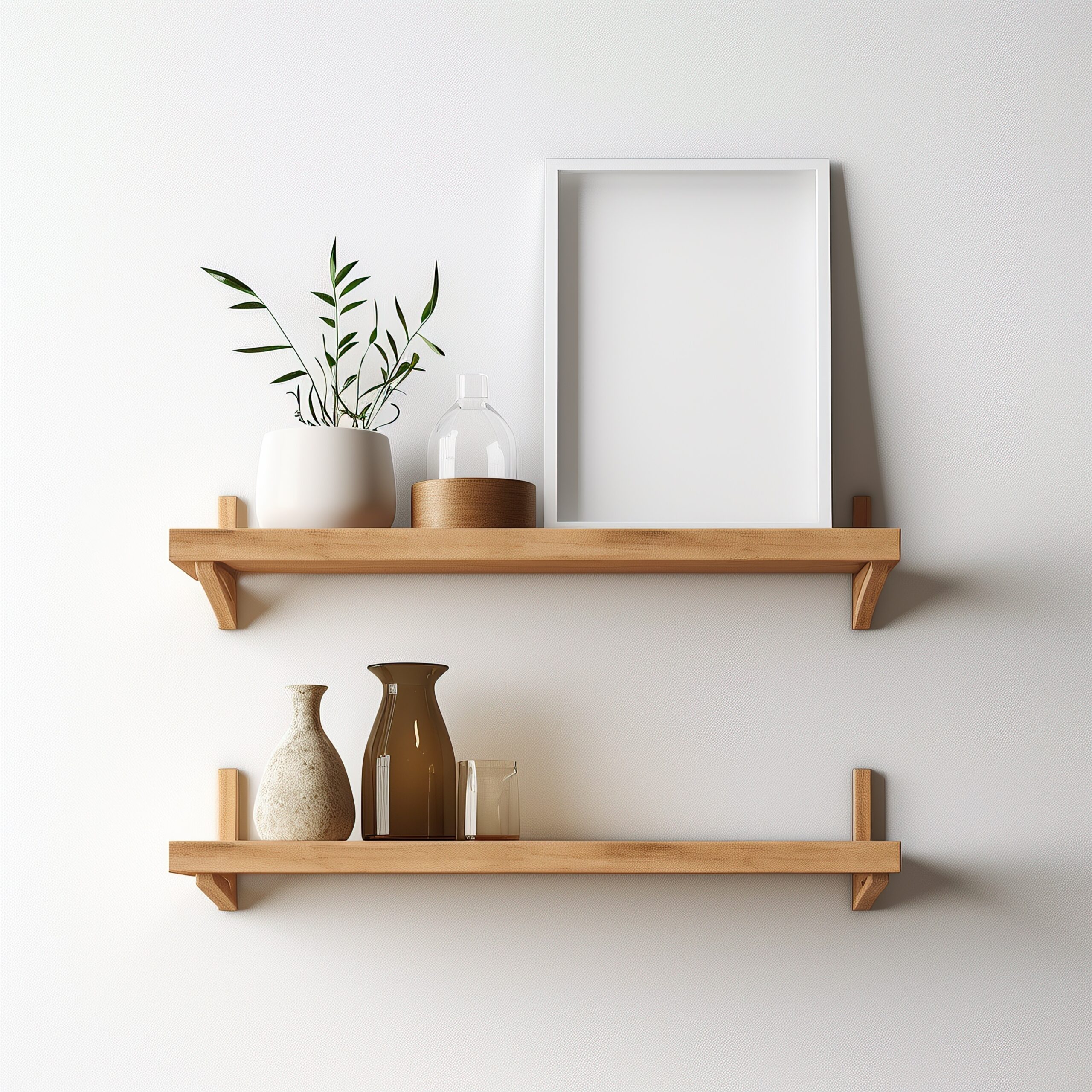
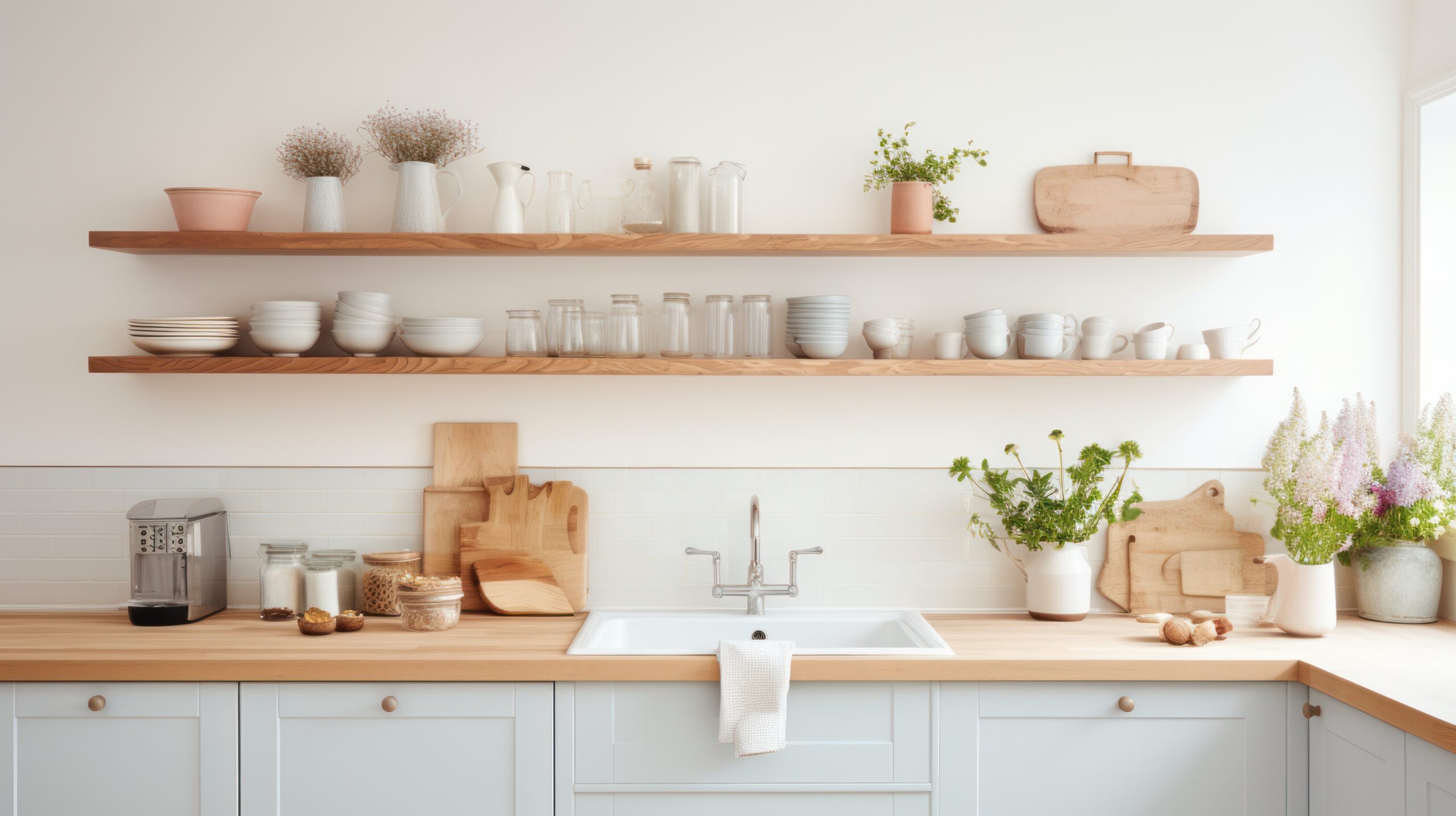



0 Comments